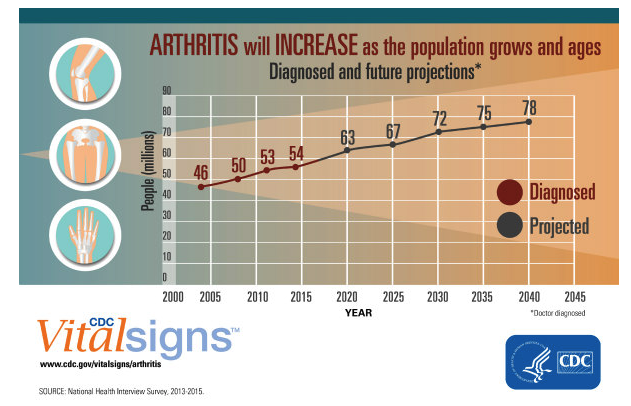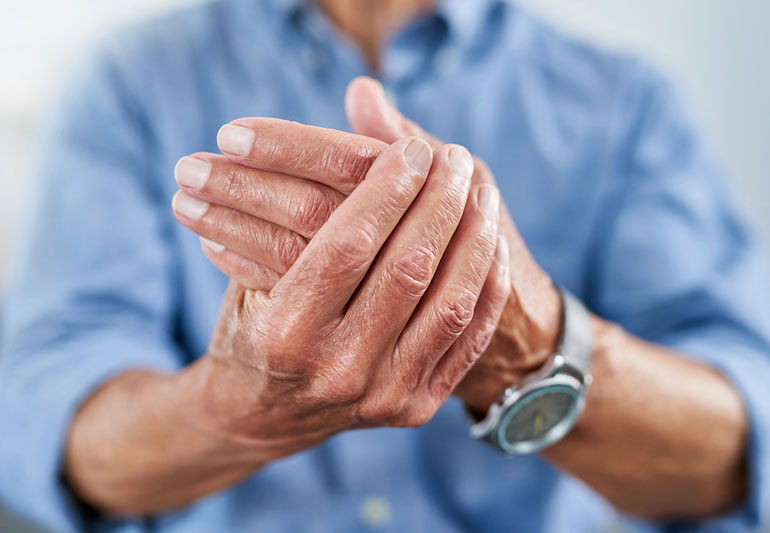Arthritis is a condition leading to painful inflammation in the joints in this post we are going to understand what is arthritis and how to deal. This condition arises when the body’s immune system malfunctions and targets the synovial lining of the joints. Often, this disease strikes the hands, knees or ankles, typically affecting identical joints on opposite sides of the body, such as both hands or both knees. However, RA isn’t restricted to the joints alone and might lead to complications in other bodily areas, like the eyes, the cardiovascular system, and the lungs.
Table of Contents
The triggers behind RA remain a mystery, but its prevalence is notably higher in women than men. It typically manifests during middle age. The presence of a family history of RA heightens the probability of an individual developing this disease.
Arthritis is most common in the following areas of the body:

- Neck Arthritis
- Thumb Arthritis
- Hip Arthritis
- Arthritis hands
- knee Arthritis
- Feet Arthritis
- Hands Arthritis
- Hips Arthritis
- Knees Arthritis
- Lower back Arthritis
Over 22% of adult Americans, amounting to more than 52.5 million individuals, have been diagnosed by a doctor with arthritis or another rheumatic condition. 7.3% of individuals between the ages of 18 and 44 have medically diagnosed arthritis; the percentage rises to 30.3% for those aged between 45 and 64, and it’s almost half, 49.7%, for individuals over 65. When it comes to gender, 26% of women and 19.1% of men have been diagnosed with arthritis by a doctor. In terms of ethnicity, 2.9 million Hispanic adults and 4.6 million non-Hispanic Black adults have reported medically diagnosed arthritis. Predictions suggest that by 2030, the number of adults (18 years and older) living with arthritis is set to increase to 67 million.
What are the different types of Arthritis?
Arthritis is an overarching term referring to over 100 distinct joint-related conditions. Here are some of the most frequently encountered Arthritis types:
- Osteoarthritis, often referred to as “wear and tear” arthritis, is triggered by the gradual deterioration of joint cartilage due to continuous stress. It’s the most prevalent form of arthritis.
- Ankylosing spondylitis is arthritis that predominantly affects the spine, typically the lower back region.
- Juvenile arthritis (JA) is a condition where the immune system targets the tissue surrounding the joints. JA usually impacts children who are 16 or younger.
- Gout is a condition characterised by the formation of hard uric acid crystals within your joints.
- Psoriatic arthritis is a type of joint inflammation that occurs in individuals suffering from psoriasis, an autoimmune disorder leading to skin irritation.
- Rheumatoid arthritis is a disease where the immune system launches an attack on the synovial membranes within your joints which leads to pain and swelling.
What are the early warning signs of arthritis
- Joint pain, stiffness and tenderness
- Inflammation in and around the joints
- Restricted movement of the joints
- Warm red skin over the affected joint
- Weakness and muscle wasting
What causes arthritis
In a healthy individual, the immune system is responsible for warding off harmful intruders, such as bacteria and viruses. However, with an autoimmune disorder like RA, the immune system misconstrues the body’s own cells as foreign threats, releasing inflammatory substances that attack these cells. In the case of RA, the target of this assault is the synovium, the tissue that lines the joints and generates a fluid that aids smooth joint movement. When the synovium becomes inflamed, it thickens, leading to pain, tenderness, redness, and swelling in the joint area. It can also make joint movement challenging.
The exact reasons behind the development of RA are still unclear to scientists. They theorise that certain individuals may possess specific genes that become active when exposed to an environmental trigger, such as a virus or bacteria, physical or emotional stress, or any other external factor.

How to Prevent Arthritis
Here are things you can do to decrease your chances of developing arthritis:
Lifestyle
Exercise: If you have arthritis you may not be able to do exercise. Although, being active will help to reduce or prevent pain.
Joint Care: It is very important to look after your affected joints to avoid further damage. For example, by reducing stress on your joints while lifting or carrying things.
At Home: If you have arthritis, daily tasks at home can be challenging. However, making small changes to your home and the way you work will make this easier which help may help you.
Positive Attitude and Support System: Cultivating a positive mindset can play a crucial role in managing chronic pain. A positive attitude can help you better cope with pain and improve your overall quality of life. Building a strong support network of friends, family, and co-workers who understand your situation can provide emotional support and encouragement. Engaging in activities you enjoy can distract from the pain and boost your mood.
Foods to Eat
- Green tea
- Salmon, Tuna
- Berries, apples and pomegranates
- Vegetables
- Canola and olive oils
- Ginger and turmeric
- Lots of Nuts
- Whole grains
- Dark chocolate
- Salsa
Foods to Avoid
- Added sugars
- Processed and red meats
- Gluten-containing foods
- Highly processed foods
- Alcohol
- Certain vegetable oils
- Foods high in AGEs
Supplements
Curcumin, the active ingredient in turmeric, has anti-inflammatory properties and may help alleviate symptoms of rheumatoid arthritis. Omega-3 fish oil supplements can also be beneficial due to their anti-inflammatory effects. However, it’s essential to consult a healthcare professional before starting any supplement regime, as they can interact with other medications or have potential side effects.
FAQ
How to test for arthritis in hands?
Symptoms of arthritis often include joint pain, swelling, stiffness, and reduced range of motion. Some forms may also cause redness, warmth around the joint, and chronic fatigue.
What causes arthritis in young adults?
In young adults, arthritis can be caused by factors such as autoimmune diseases, genetic predisposition, previous joint injuries, or infections. Environmental triggers may also play a role.
How to test for arthritis in hands?
To diagnose arthritis in hands, doctors usually perform a physical examination, assess medical history, and may recommend imaging tests like X-rays or MRI. Blood tests can also aid diagnosis.
What is the most serious type of arthritis?
Rheumatoid arthritis is often considered the most severe form of arthritis as it’s an autoimmune disorder that can cause systemic inflammation, affecting organs beyond the joints.
What is the treatment for arthritis?
Arthritis treatment aims to reduce symptoms and improve quality of life. This can involve a combination of medication, physical therapies, lifestyle changes, and in some cases, surgery.
What are the causes of arthritis and rheumatism?
Causes of arthritis and rheumatism include genetic factors, age, previous injury, and autoimmune disorders. Lifestyle factors, such as smoking and obesity, can also contribute.
What foods should be avoided with arthritis?
Foods high in sugars, saturated fats, and processed items may aggravate arthritis symptoms. Red meat, dairy, and alcohol are also known to contribute to inflammation.
How can arthritis be prevented?
While not all types of arthritis can be prevented, maintaining a healthy lifestyle, regular exercise, balanced diet, and avoiding injury can help reduce the risk.

